Nutrition

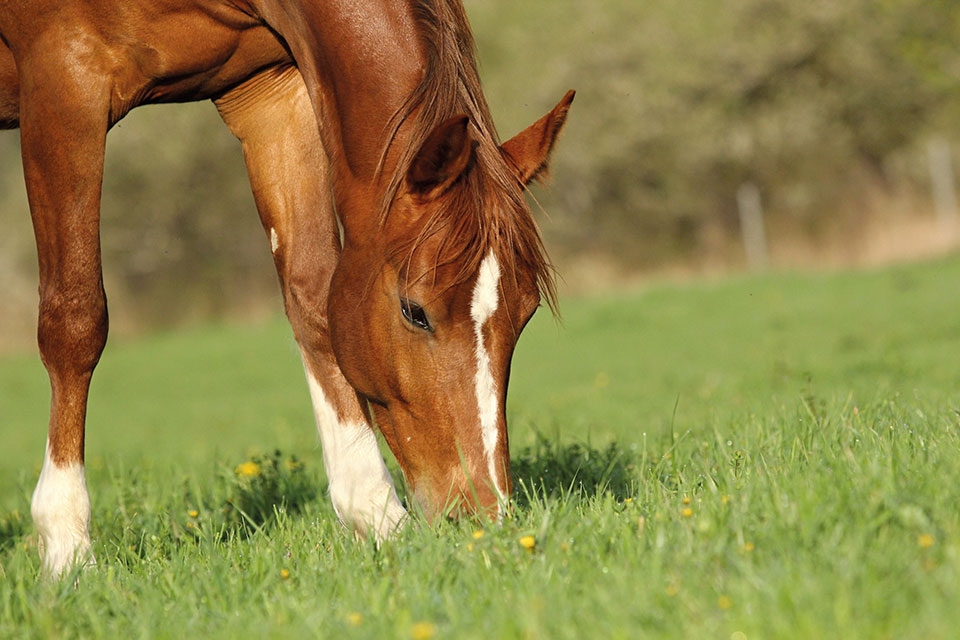
By its nature, the horse is an herbivore
Wild horses graze between 16 and 18 hours a day over large areas, thus finding a variety of plants essential to their balance. Fibres are extremely important, and that is why feed ration must be composed of 50% of forage at least.
FOCUS ON...
Fibres and microbiota
The large intestine hosts the microbiota, which is the health reserves of horses. Its effective functioning requires enough fibres to enable the development of beneficial bacteria. Preserving this microbiota diversity is essential to maintain an ideal pH, to supply energy and to limit the risk for developing many diseases (e.g. laminitis, colic, myositis…).

Energy is vital for horses
Energy is at the heart of horse’s life.
The horse energy requirement is expressed in DE: Digestible Energy and measured in Megacalorie Mcal). It is calculated by adding maintenance needs (according to basic, breed and climate metabolism) to production requirements (growth, gestation and activity)
A few examples:
- The maintenance needs of a 500Kg horse is estimated at between 8 to 9,5 Mcal.
- The production of 1 litre of milk requires 4 Mcal
- Show jumping activity requires 7 to 13,5 additional Mcal, trotting from 13,5 to 20 Mcal and gallop from 27 to 40,5 MCal.
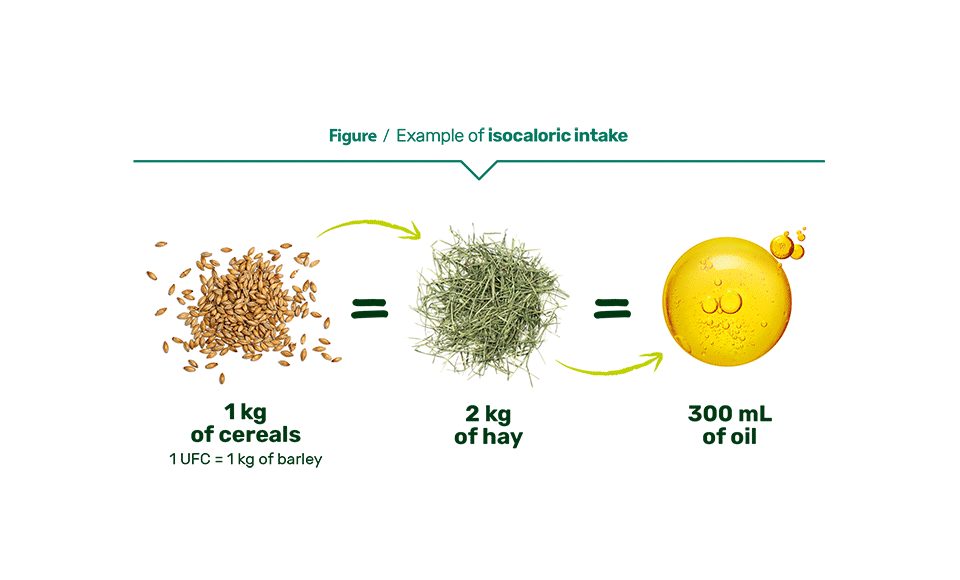
The main energy sources for horses
There are three energy sources: fibres, starch and fat. Each has its own usefulness and features.
- Starch = preferential energy source but given the weak ability of horses to digest it, the level shall be limited to prevent the undigested starch fermentation from reducing pH and affecting the microbiota.
> So, please make sure not to exceed 1,5g starch/meal/kg of horse bodyweight. - Fermentable fibers = sustained energy release throughout the day thanks to the degradation of fibers by microbiota whose action continues long after ingestion.
> Fibres should be considered as an essential nutrient. They are necessary for horse health and well-being. - Fat = highly concentrated energy source (energy density 2,25 times higher than the starch one) which spares the use of muscular glycogen.
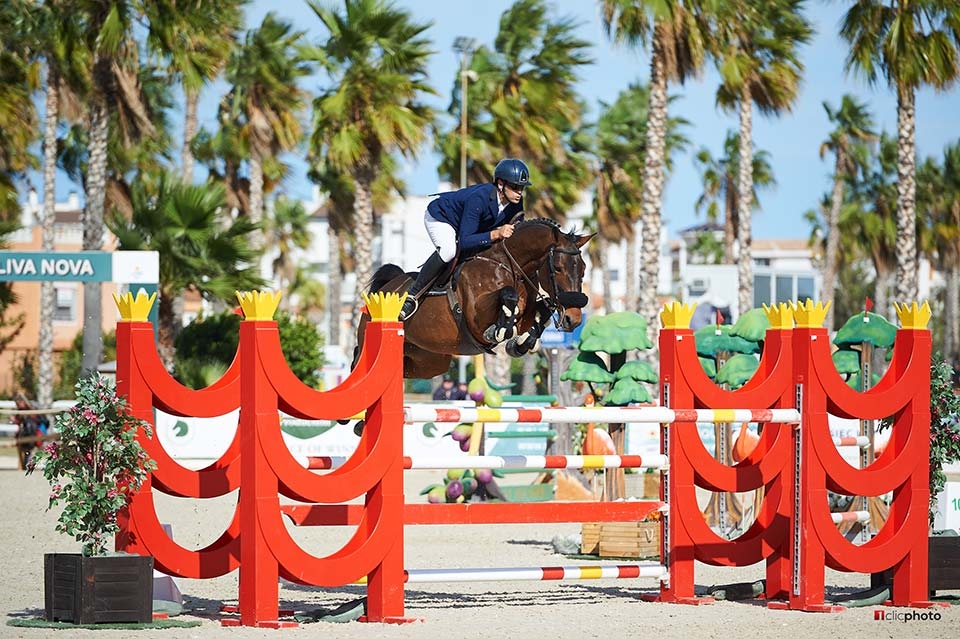
The nutritional balance of working horses, how is energy stored for coming efforts?
This energy is stored in the form of glycogen (muscles and liver) and triglycerides (muscle and fatty tissues) for the purpose of establishing reserves for future needs. In the case of horses, the replenishment of glycogen reserves requires from 48 to 72h.
The limiting factor for a working horse is the glucose level in blood sustained by glycogen mobilization. When there is not enough, blood sugar is falling and implies a state of tiredness. Maintaining the appropriate content of glucose in the blood during an exercise is therefore the most important thing.
Repetitive exercises lead to depletion of energy reserves, which could entail recovery problems, muscle wasting, bone and tendon weaknesses, anaemia, myositis, state of tiredness…
FOCUS ON...
Management of blood glucose
Dynavena has made the choice to incorporate in its products different types of sugars: fast-release sugars (cane molasses) and slow-release sugars (disaccharides) in order to allow a progressive energy availability, thus moderating the glycemic response (hypoglycemia peak) and the resulting negative effects.
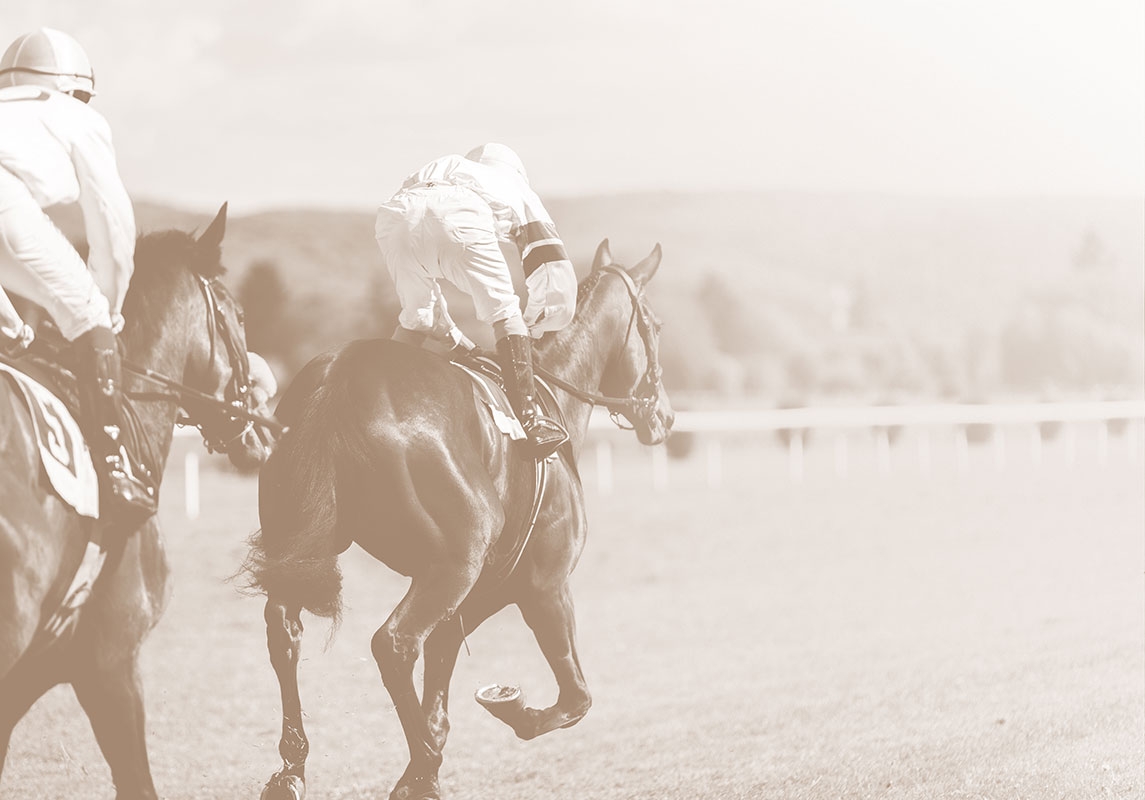
How is energy supplied to muscles for working horses?
During a low-intensity physical effort (warm-up, short trot or hunting gallop), fatty acids are preferred, and this requires a supply of oxygen. This is called aerobic pathway.
> That kind of effort can be supported for a long time because fat supply is almost inexhaustible.
The more the speed and intensity of the effort increase, the more muscle fibers convert glycogen reserves into glucose, without additional source of oxygen but with production of lactic acid. This is called lactic anaerobic pathway.
> Due to limited glycogen reserves and slow restores, that kind of effort cannot be supported for a long time, without risking over-training. Significant lactate accumulation may cause tiredness but also loss of muscle mass since the horse should use its proteins to obtain energy.
Finally, creatine phosphate also provides instant energy but for a very short-term duration, without support of oxygen or lactate production. This is called anaerobic and alactic pathway.
> It is only used at the beginning of the effort with heart rate increase.
These three pathways can operate in conjunction with each other depending on the duration and intensity of work. This is the case for canter.
> Just as training, nutrition plays a key role in directing the energy metabolism during work.
Therefore Dynavena has chosen to provide in its products the 3 energy sources (starch, fermentable fibers and fat), in varied and well-balanced contribution, in order to get the horse used to make more use of the aerobic pathway.
All the feeds of the Activity range thus allow to preserve reserves in glycogen, to limit lactic acid production and consequently delay tiredness.
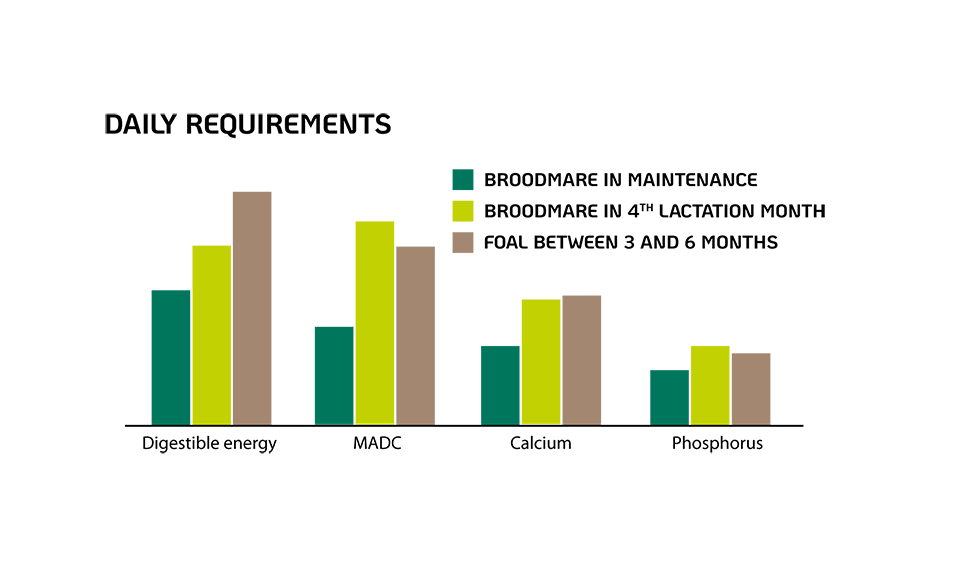
The nutritional balance of breeding horses what are the needs of broodmares?
The broodmare is subject to wide variations of feed needs during its reproduction cycle. The late gestation and early lactation are the two most important periods.
From the eighth month, the foal development is strongly accelerating, in weight and size and its internal organs achieve their formation.
During the first three months of lactation, the mare shall ensure, in quantity and quality, a milk production to guarantee an optimal growth to its foal, milk is the only digestible food for the foal.
Under-energy-nourishment, deficiency in essential nutrients as well as lack of minerals and vitamins lead to poor colostrum quality, lower milk production, less rich milk and even fertility problems.
A well balanced and quality diet from late gestation = GUARANTEE OF SUCCESS
The access to pasture as well as the amount and quality of forage depending on the period of the year are parameters to be considered in brood mare diet. Both production and quality of grass indeed vary within the season, plant species and the areas.
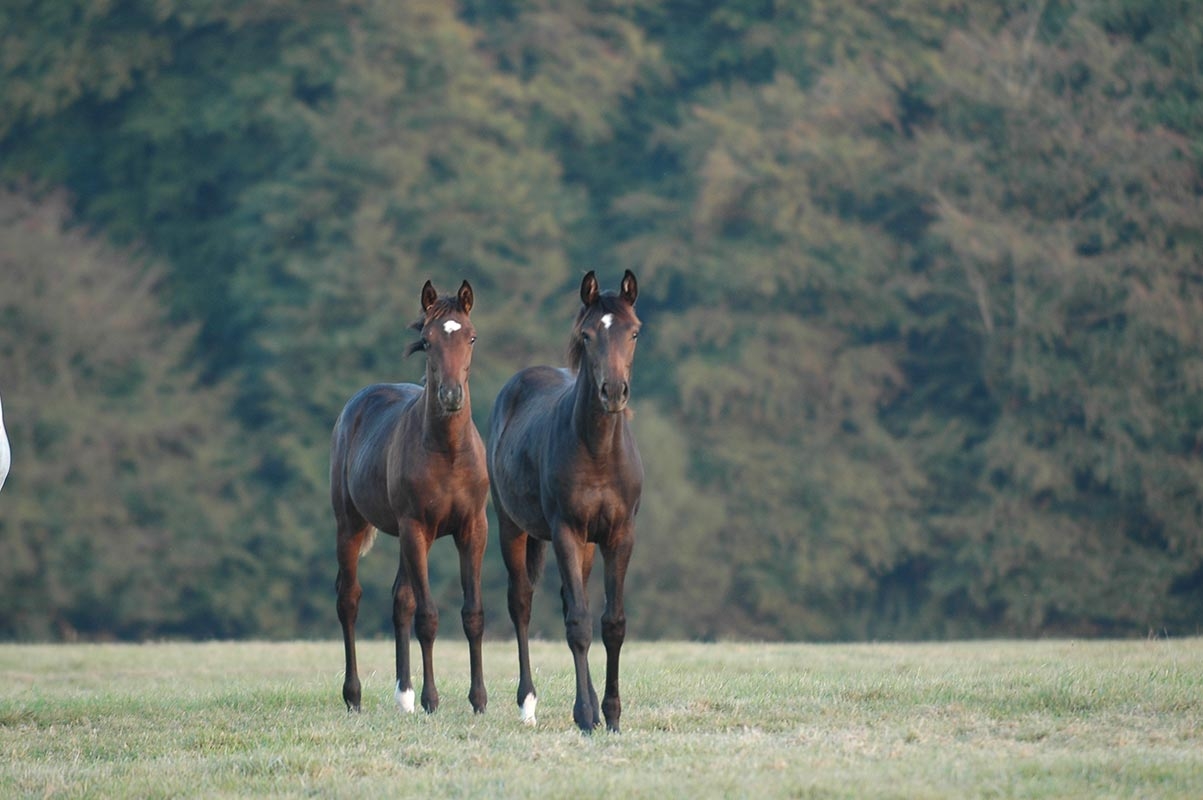
Regarding breeding horses, how to give a better start to foals?
The foal digestive system is immature towards solid feed digestion as well as forage. Its microbial flora is not well developed but the feed ingested, even though still negligible, is sufficient to stimulate its adaptation. In order to carefully develop the foal digestive capabilities, it is necessary to distribute a specific feed as early as 2 months, an age when milk does not cover all its requirement anymore.
Weaning is followed by a reduction of growth rate which is even more aggravated if pre-weaning nutrition has been neglected. Therefore, the foal must be given a feed well suited for its needs, palatable enough, which contains high quality proteins like whey. Above all the diet must be adapted to its age, state of progress and its ability to digest forage. Since the full forage digestibility could only be achieved from the age of 18 months, the foal must be provided with the best hay.
Dietary mistakes:
- Protein deficiency or bad mineral ratio impedes the development of a well-developed and strong skeleton,
- Energetic deficiency first affects fat reserves and then is causing muscle loss when training start,
- Energetic excess from carbohydrates leads to an important blood sugar peak. The higher the peak is, the more the organism secretes insulin to store energy in the form of reserves. Repeated hyperinsulinemia will result in a hormonal imbalance and an increase in the blood calcium, which are responsible for a defect in cartilage maturation.
FOCUS ON...
Management of blood glucose
Dynavena has decided to diversify the energy sources by providing ingredients with low glycemic index in order to limit serious consequences induced by high insulin responses (insulin resistance, cartilage imbalance for foals).
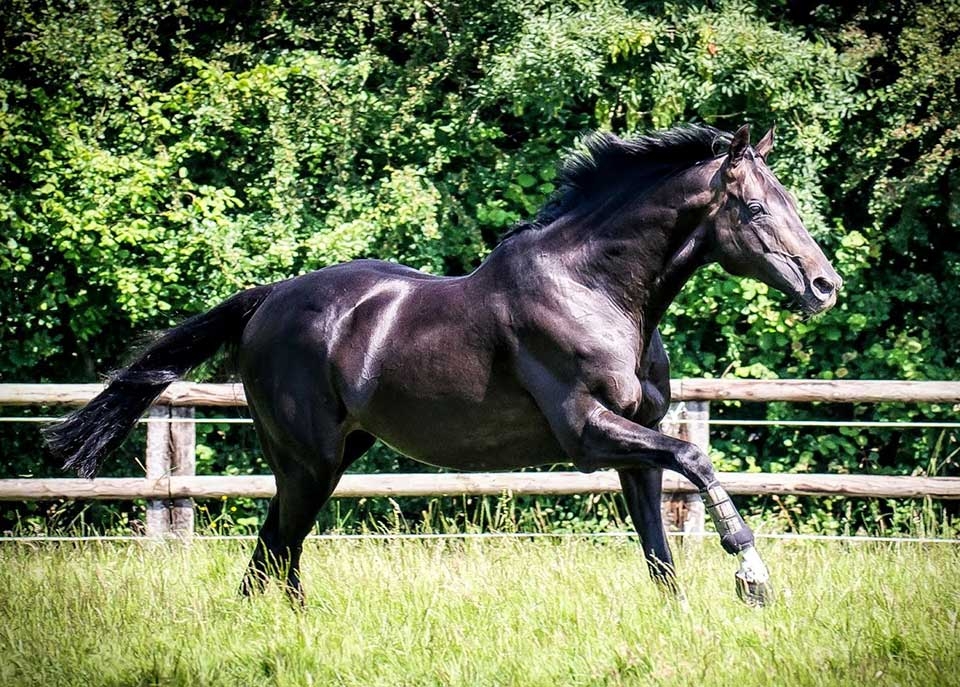
Regarding breeding horses, what are the needs of stallion?
The energy needs of the stallion increase in reproduction times. Therefore, it is necessary to increase the daily feed ration during this season.
